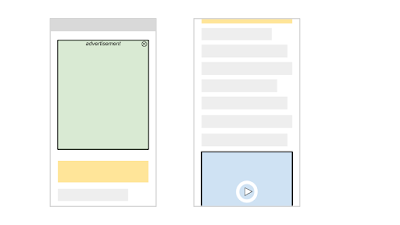Published on 07/22/2020 – Last Updated on 07/22/2020 by OTC
(Caption: desktop version with 10 thumbnails / mobile version with 2 thumbnails)
In this case, Googlebot won’t click the button to load the 8 images, so Google won’t see those images. The result is that they won’t be indexed or shown in Google Images. Follow Google’s lazy-loading best practices, and lazy load content automatically based on its visibility in the viewport.
Be aware of what you block
Some resources have different URLs on the mobile version from those on the desktop version, sometimes they are served on different hosts. If you want Google to crawl your URLs, make sure you’re not disallowing crawling of them with your robots.txt file.
For example, blocking the URLs of .css files will prevent Googlebot from rendering your pages correctly, which can harm the ranking of your pages in Search. Similarly, blocking the URLs of images will make these images disappear from Google Images.
Make sure primary content is the same on desktop and mobile
If your mobile version has less content than your desktop version, you should consider updating your mobile version so that its primary content (the content you want to rank with, or the reason for users to come to your site) is equivalent. Only the content shown on the mobile version will be used for indexing and ranking in Search. If it’s your intention that the mobile version has less content than the desktop version, your site may lose some traffic when Google enables mobile-first indexing for your site, since Google won’t be able to get the full information anymore.
Use the same clear and meaningful headings on your mobile version as on the desktop version. Missing meaningful headings may negatively affect your page’s visibility in Search, because we might not be able to fully understand the page.
For example, if your desktop version has the following tag for the heading of the page:
<h1>Photos of cute puppies on a blanket</h1>
Your mobile version should also use the same heading tag with the same words for it, rather than using headings like:
<h1>Photos</h1> (not clear and meaningful)
<div>Photos of cute puppies on a blanket</div> (not using a heading tag)
Check your images and videos
Make sure the images and videos on your mobile version follow image best practices and video best practices. In particular, we recommend that you perform the following checks:
Image quality
Don’t use images that are too small or have a low resolution on the mobile version. Small or low-quality images might not be selected for inclusion in Google Images, or shown as favorably when indexed.
For example, if your page has 10 primary images on the desktop version, and they are normal, good quality images. On the mobile version, a bad practice is to use very small thumbnails for these images to make them all fit in the smaller screen:
(Caption: desktop version with normal thumbnails / mobile version tiny thumbnails)
In this case, these thumbnails may be considered “low quality” by Google because they are too small and in a low resolution.
Alt attributes for images
As previously mentioned, remember that using less-meaningful alt attributes might negatively affect how your images are shown in Google Images.
For example, a good practice is like the following:
<img src="dogs.jpg" alt="A photo of cute puppies on a blanket"> (meaningful alt text)
While bad practices are like the following:
<img src="dogs.jpg" alt> (empty alt text)
<img src="dogs.jpg" alt="Photo"> (alt text not meaningful)
Different image URLs between desktop and mobile version
If your site uses different image URLs for the desktop and mobile version, you may see a temporary traffic loss from Google Images while your site transitions to mobile-first indexing. This is because the image URLs on the mobile version are new to the Google indexing system, and it takes some time for the new image URLs to be understood appropriately. To minimize a temporary traffic loss from search, review whether you can retain the image URLs used by desktop.
Video markup
If your desktop version uses schema.org’s VideoObject structured data to describe videos, make sure the mobile version also includes the VideoObject, with equivalent information provided. Otherwise our video indexing systems may have trouble getting enough information about your videos, resulting in them not being shown as visibly in Search.
Video and image placement
Make sure to position videos and images in an easy to find location on the mobile version of your pages. Videos or images not placed well could affect user experience on mobile devices, making it possible that Google would not show these as visibly in search.
For example, assume you have a video embedded in your content in an easy to find location on desktop:
On mobile, you place an ad near the top of the page which takes up a large part of the page. This can result your video being moved off the page, requiring users to scroll down a lot to find the video:
(Caption: video on mobile is much less visible to users)
In this case, the page might not be deemed a useful video landing page by our algorithms, resulting in the video not being shown in Search.
You can find more information and more best practices in our developer guide for mobile-first indexing.
Mobile-first indexing has come a long way. It’s great to see how the web has evolved from desktop to mobile, and how webmasters have helped to allow crawling and indexing to match how users interact with the web! We appreciate all your work over the years, which has helped to make this transition fairly smooth. We’ll continue to monitor and evaluate these changes carefully. If you have any questions, please drop by our Webmaster forums or our public events.














Comments